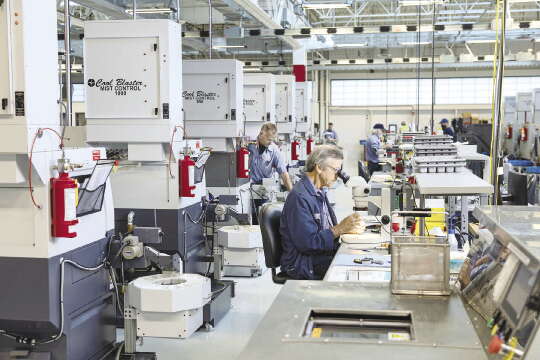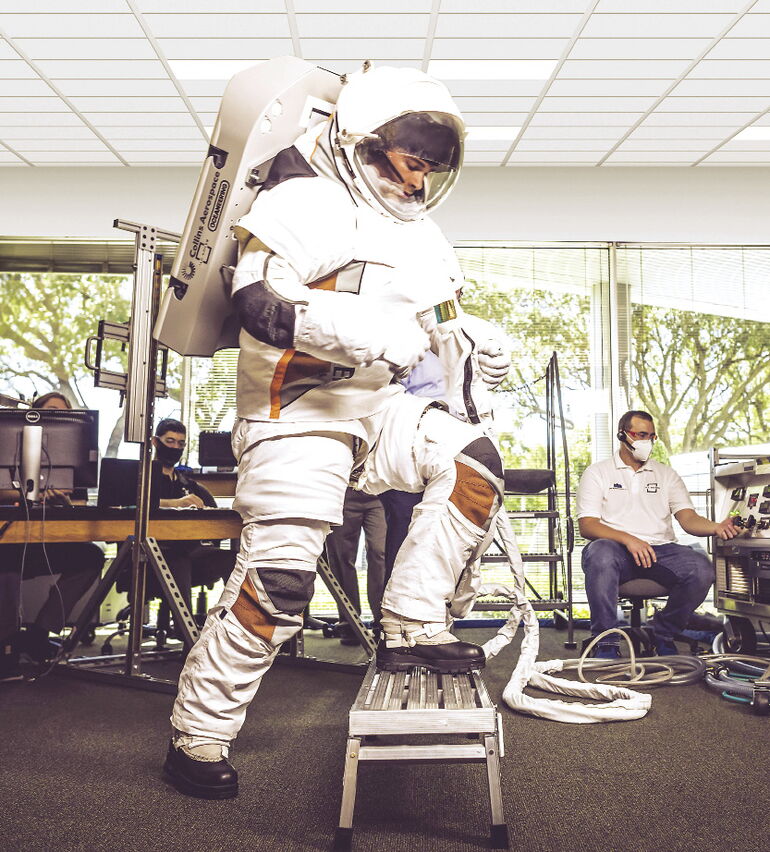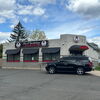
Processing Your Payment
Please do not leave this page until complete. This can take a few moments.
-
News
-
Editions
-
- Lists
-
Viewpoints
-
HBJ Events
-
Event Info
- 2024 Economic Outlook Webinar Presented by: NBT Bank
- Best Places to Work in Connecticut 2024
- Top 25 Women In Business Awards 2024
- Connecticut's Family Business Awards 2024
- What's Your Story? A Small Business Giveaway 2024 Presented By: Torrington Savings Bank
- 40 Under Forty Awards 2024
- C-Suite and Lifetime Achievement Awards 2024
- Connecticut's Health Care Heroes Awards 2024
-
-
Business Calendar
-
Custom Content
- News
-
Editions
View Digital Editions
Biweekly Issues
- April 15, 2024
- April 1, 2024
- March 18, 2024
- March 4, 2024
- February 19, 2024
- February 5, 2024
- January 22, 2024
- January 8, 2024
- Dec. 11, 2023
- + More
Special Editions
- Lists
- Viewpoints
-
HBJ Events
Event Info
- View all Events
- 2024 Economic Outlook Webinar Presented by: NBT Bank
- Best Places to Work in Connecticut 2024
- Top 25 Women In Business Awards 2024
- Connecticut's Family Business Awards 2024
- What's Your Story? A Small Business Giveaway 2024 Presented By: Torrington Savings Bank
- 40 Under Forty Awards 2024
- C-Suite and Lifetime Achievement Awards 2024
- Connecticut's Health Care Heroes Awards 2024
Award Honorees
- Business Calendar
- Custom Content
Space Bound: CT manufacturers contribute tech to NASA, other cosmic missions
 PHOTOS | CONTRIBUTED
A mobility test of Collins Aerospace’s next generation spacesuit.
PHOTOS | CONTRIBUTED
A mobility test of Collins Aerospace’s next generation spacesuit.
Westbrook-based The Lee Co. is one of many Connecticut businesses helping NASA reach its goal for future missions to the moon and beyond.
Lee has been supporting NASA and its subcontractors since the space race began in the 1950s.
Executive Vice President of Hydraulics Jeffrey Dickey said the company supplied parts that kept the oxygen supply of astronauts safe while they walked on the moon between 1969 and 1972.
“The current NASA work gives us a great sense of pride to be helping us get back to the moon with Artemis,” said Dickey.
Numerous Connecticut companies have contributed materials to NASA, specifically the Artemis I mission, in which an unmanned Orion spacecraft made a 25-day journey around the moon last year.

Connecticut manufacturers will also be instrumental in future Artemis missions that ultimately aim to put the first woman and next man on the moon.
Collins Aerospace in Windsor Locks, like Lee, has a long history of supporting NASA on various projects.
Materials from Collins were on Voyager 1 and 2, which ventured outside the solar system; the Spirit and Opportunity rovers, which landed on Mars; and the Huygens Probe that visited the surface of Titan, one of Saturn’s moons.
Back to the moon
Gov. Ned Lamont during the recent American Manufacturing Hall of Fame induction ceremony in Farmington spotlighted contributions made by 41 Connecticut companies to the Artemis I space mission.
The unmanned spacecraft made its 25-day trip around the moon, then splashed down in the Pacific Ocean on Dec. 11.
Lamont said his administration is committed to supporting growth of these manufacturers through workforce development programs that aim to help fill high-tech jobs needed by the industry.
“Connecticut is the birthplace of the Industrial Revolution, and we continue to lead the world in many industries,” Lamont said.
The Artemis I, which is part of the Orion series of spacecraft, launched from the Kennedy Space Center using the Space Launch System, a new powerful heavy-lift rocket.
Orion is designed for deep-space exploration, carrying crews to space, providing emergency abort capability, sustaining astronauts during their missions and allowing for safe re-entry from deep space.
The Artemis I mission saw the unmanned craft travel 1.4 million miles: 280,000 miles from Earth and 40,000 miles beyond the far side of the moon.
NASA reported that Artemis I stayed in space longer than any human spacecraft has without needing to dock at a space station.
Future Artemis missions will bring astronauts to the moon so they can begin testing systems needed for lunar surface missions and exploration to further destinations in space such as Mars.
Connecticut contributions
The Lee Co. supplies plugs, check and pressure relief valves, screens and restrictors that are used in the life support, fluid control and other systems on the Orion capsule.
Parts from Lee are also aboard the new Space Launch System. The RS-25 main engines and upper stage engines are fitted with plugs, check valves, relief valves, screens, restrictors and more that aid with ignition, fluid control and actuation systems.
Most of the materials are used throughout the systems. Screens, for instance, are important because they prevent contamination or debris from getting into critical areas and causing damage or life-reducing wear.
These materials are provided from Lee both directly to NASA and to subcontractors that assemble systems for the spacecraft for the Artemis I mission and future Orion missions including Artemis II.
Companies such as Oxford-based Kimtron and Branford-based Oxley Inc. have indirectly supplied NASA with materials through various subcontractors.
Kevin Bergen, product engineer for Colonial Spring Co., said his Bristol-based business has been a supplier to Aerojet Rocketdyne for decades. Rocketdyne builds the RL10 engine for the upper stage of Artemis’ rocket. Aerojet also makes the RS-25 engine for Artemis.
Nicholas Eberhart, associate director of business development for space systems at Collins Aerospace in Windsor Locks, said his company does a variety of work for NASA, specifically the Orion spacecraft.
These include the design of next-generation spacesuits; and the design and engineering for the portable life support system, as well as the oxygen generation and water recapture that are part of that system. All work is done at the company’s South Windsor facility, Eberhart said.
A contract for the Artemis mission spacesuits has yet to be awarded.
Collins Aerospace, which is a subsidiary of Raytheon Technologies, provides all the life support, thermal cooling control, full tower management and distribution systems for Orion. The company also provides a portion of the pressure control systems, which are subcontracted to Lockheed Martin, the prime contractor for Orion and NASA’s exploration ground systems.
Collins provides the systems to Lockheed Martin and helps with the overall integration into the spacecraft.
Eberhart said that while not related to the Orion missions, Collins Aerospace is in a contract with the International Space Station, which was awarded in December, to develop the next generation of spacesuits.
Collins Aerospace signed a contract with Lockheed Martin in January 2020 to provide subsystems to support production of the Orion spacecraft for Artemis missions III through VIII.
The $320 million deal will allow Collins to play a key role in enabling NASA to get boots on the moon by 2024, and to prepare for missions to Mars.
The work for these systems — including environmental and thermal controls, and power and waste management — will be performed at the Collins Aerospace facilities in Windsor Locks, Houston, Rockford, Illinois, and San Dimas, California.
The Artemis II mission, which is set to launch in November 2024, will achieve the goal of having an onboard crew test the spacecraft’s systems in deep space to pave the way for Artemis III, which hopes to put the first woman and next man on the moon.
Beyond NASA
Connecticut manufacturers are also contributing to space exploration efforts beyond NASA.
The Lee Co., for example, has supplied materials to SpaceX for its rockets. In September 2020, the manufacturer posted on social media a picture of a letter received from SpaceX, thanking The Lee Co. for its contribution to the SpaceX Crew Dragon capsule on a Falcon rocket.
Windsor-based Infinity Fuel Cell & Hydrogen Inc. has built prototype power units for the lunar rover and space station.
It also provided the hydrogen fuel cell-based power and energy system that operated successfully last September aboard Blue Origin’s New Shepard 23 flight.

2022 Giving Guide
This special edition informs and connects businesses with nonprofit organizations that are aligned with what they care about. Each nonprofit profile provides a crisp snapshot of the organization’s mission, goals, area of service, giving and volunteer opportunities and board leadership.
Learn more
Subscribe
Hartford Business Journal provides the top coverage of news, trends, data, politics and personalities of the area’s business community. Get the news and information you need from the award-winning writers at HBJ. Don’t miss out - subscribe today.
Subscribe
2024 Book of Lists
Delivering Vital Marketplace Content and Context to Senior Decision Makers Throughout Greater Hartford and the State ... All Year Long!
Read Here-
2022 Giving Guide
This special edition informs and connects businesses with nonprofit organizations that are aligned with what they care about. Each nonprofit profile provides a crisp snapshot of the organization’s mission, goals, area of service, giving and volunteer opportunities and board leadership.
-
Subscribe
Hartford Business Journal provides the top coverage of news, trends, data, politics and personalities of the area’s business community. Get the news and information you need from the award-winning writers at HBJ. Don’t miss out - subscribe today.
-
2024 Book of Lists
Delivering Vital Marketplace Content and Context to Senior Decision Makers Throughout Greater Hartford and the State ... All Year Long!
ABOUT
ADVERTISE
NEW ENGLAND BUSINESS MEDIA SITES
No articles left
Get access now
In order to use this feature, we need some information from you. You can also login or register for a free account.
By clicking submit you are agreeing to our cookie usage and Privacy Policy
Already have an account? Login
Already have an account? Login
Want to create an account? Register
Get access now
In order to use this feature, we need some information from you. You can also login or register for a free account.
By clicking submit you are agreeing to our cookie usage and Privacy Policy
Already have an account? Login
Already have an account? Login
Want to create an account? Register






0 Comments